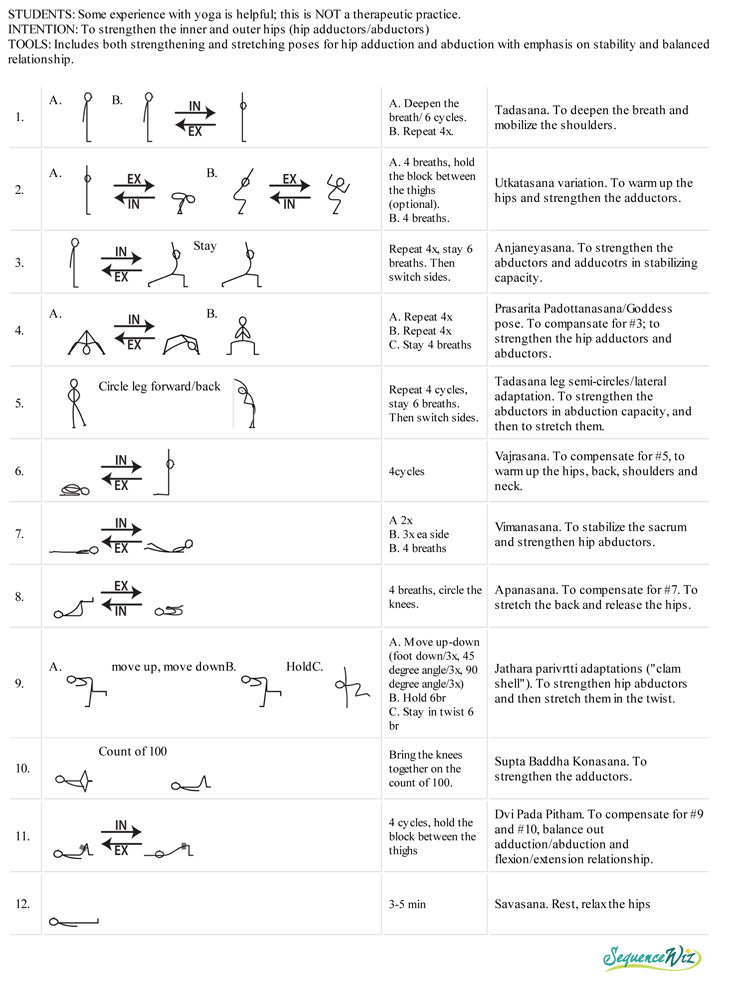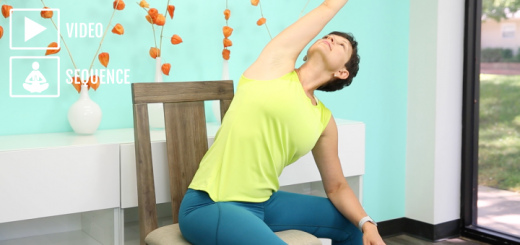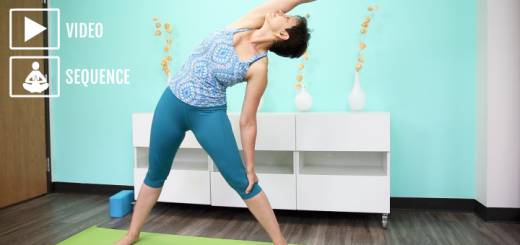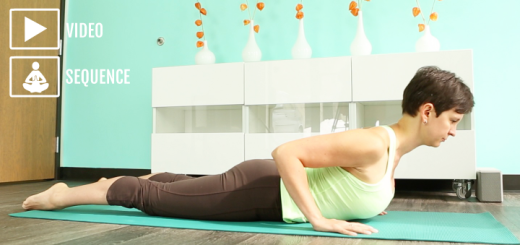How important walking is to you?
7When I interviewed one of my yoga clients recently about the benefits that she gets from private yoga sessions with me, the first thing she said was: “I am able to walk with ease”. She is 72 and considers her ability to walk essential for her health, energy and peace of mind.
How important walking is to you (and your students)? This is something that we take for granted, until it becomes problematic. Every step we take is a delicate dance between multiple muscle groups, especially between your aBDuctors and aDDuctors. Those muscles stabilize your pelvis when you walk. If they get weak (which is common, since we all sit and drive so much), walking can become painful and balance will falter.
This week we feature a 30-minute yoga practice for strengthening the abductors and adductors to keep the gait stable and pain-free. Keep in mind that this practice might be too strong for you if you already have hip pain, so you will need to cut down on the number of repetitions and the time you hold the poses. Be especially careful with the standing ones. Over time you can build muscle strength and endurance to keep the relationship between your abductors and adductors healthy and strong. Give it a try and let us know what you think!
Yoga practice for abductors and adductors

Join Sequence Wiz to customize this practice to your liking. Choose your poses, enter the instructions and you are done! See it in action >
![]()





















great practice. I was surprise on the exercice where we have to count to 100 while taking the knees together : my legs began to shake firmly and slowly totally undercontrol… so strange… is it the adductors?
thanks for your reply
emmi
Hi Emmi! Yep, it’s the adductors 🙂 Shaking is not unusual, it just shows that your adductors are not used to this kind of work – it’s a good way to strengthen them!
thanks a lot for your reply. that can be part of the dysharmony of the hip i guess. I’ll work on it.
Thank you for this wonderful site. I found this practice useful – and difficult. I seem to be compensating for weak ‘ductors by using my back muscles, particularly on the right side (I broke my right foot badly a couple years ago). I’m all out of whack. Any suggestions would be appreciated! I’ve also been doing the sequences for releasing piriformis – same thing, getting right side back pain.
Hi Amy! Identifying your compensation patterns is the first step toward correcting them. You can simplify the movement as much as you need to to make sure that the correct muscles are firing. So it might be useful to do the movement on the more cooperative side first to get a feel for how things should feel and then try to get the same area working on the other side, even if you have to make the movement much easier. It’s all about careful exploration and appropriate modifications! 🙂
Thank you for your reply! I’ll follow your advice and try it again this evening.
Hi Olga, your website is a wonderful resource and so glad I found it. I found your client’s comments helpful about walking with ease and pain free. I realized how imbalance I am. It is frustrating to dial back many of my activities as I exercise regularly. I found the three stage hip flexor routine very helpful in relieving my pain. And now also realize i have weak adductor and abductor muscles. Do I stop my cardio activities and leg workouts while I work on balancing and strengthening the my hip flexors and adductors/abductor muscles?